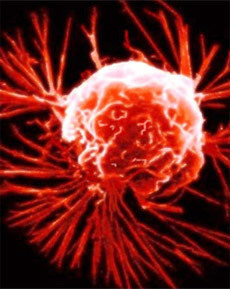fitness news
![]() ,
,![]()
Font size Cancer
Cholesterol Rafts Delivers Drugs to Cancer Cells
– Reported, April 03, 2013

(Ivanhoe Newswire) New research has discovered that cholesterol rafts can deliver genetic payloads into cancer cells.
“There are many promising therapeutic applications for nucleic acids, but because they can’t diffuse across cell membranes on their own, delivery to cancer cells has been a major challenge. Our method is a promising way to get these drugs inside cancer cells where they can do their work,” Tom Anchordoquy, PhD, investigator at the CU Cancer Center and professor at the Skaggs School of Pharmacy and Pharmaceutical Sciences, was quoted as saying.
The technology works because it exploits a new understanding of what cell membranes look like. Anchordoquy says that the scientific community used to think that membrane proteins float around in an unorganized two-dimensional soup, but now they know that different functions are clustered into domains called rafts.
The idea of a particle-payload delivery system is not new, but the introduction of a non-rafted particle into the blood will allow it to become coated with all kinds of blood proteins that can cover the membrane proteins that are needed to unlock passage into cancer cells. However, Anchordoguy and colleagues knew that blood proteins dont bind to rafts and so particles with rafts continue to present the engineered bits rather than being silted by the bodys proteins. Therefore, they made these rafts by boosting the concentration of cholesterol while also forming particles for drug delivery.
“See, rafts are made of 30-50 percent cholesterol, about five times the level in the surrounding lipid. We’d shown in earlier experiments that rafts create more delivery of payload materials into cancer cells, but there was always the outside chance that the benefit was due simply to higher levels of cholesterol and not to the action of the rafts, themselves,” Anchordoquy explained.
Researchers found that longer tails on lipid molecules will allow particles to form rafts at lower cholesterol levels. They used long-tailed lipids to form the particles, which allowed them to keep cholesterol concentration low while showing the same benefit in delivering genes into cancer cells, showing that it is the raft that facilitates the delivery.
“We’ve used these synthetic rafts to deliver a gene inside these cells that makes the cells fluoresce. That way we can see how much payload went in. But because we’re talking particles and not just individual molecules, in the future we can send other cargo like microRNA’s that can reprogram a cell’s gene expression, Anchordoquy said.
SOURCE: Therapeutic Delivery, April 2013